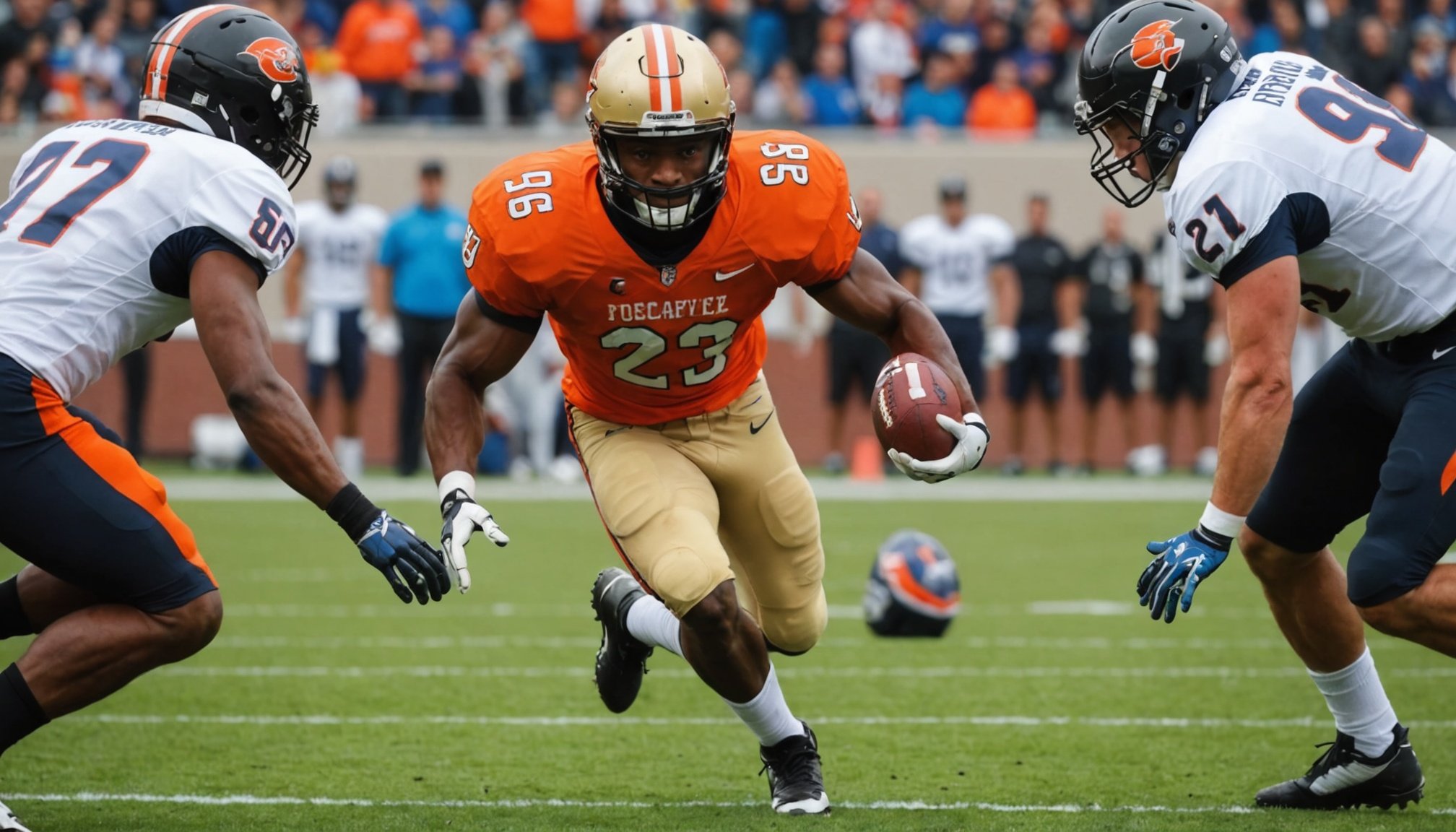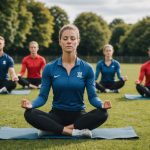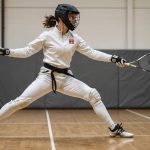Nutritional Strategies for Optimal Recovery
A well-planned recovery meal is crucial for optimal muscle repair and overall restoration following a match. Timing is essential; consuming nutrients within 30 to 60 minutes post-match maximises recovery. This period is the golden window, where the body efficiently absorbs and utilises nutrients.
Focus on key nutrients that support muscle recovery includes carbohydrates and proteins. Carbohydrates refuel depleted glycogen stores, while proteins repair and build muscle tissue. Including healthy fats aids in reducing inflammation. Consider incorporating antioxidant-rich foods like berries to combat oxidative stress.
Have you seen this : Revolutionizing Football Training: Unveiling the Game-Changing Advantages of Advanced Turf Innovations You Need to Know
Structured recovery meal plans should balance these nutrients effectively. Sample meals could include a grilled chicken wrap with whole-grain bread, spinach, and colourful vegetables, or a smoothie packed with Greek yoghurt, bananas, and a handful of nuts. These choices promote glycogen replenishment, muscle repair, and sustained energy.
Including various nutrients ensures comprehensive benefits. For optimal recovery, maintain fluid balance through proper hydration and supplement meals with electrolytes if needed, to replace those lost during intense activity.
Additional reading : Empowering future stars: proven techniques for football coaches to identify and cultivate leadership in young talent
By focusing on nutrient timing and content, post-match nutrition can significantly impact muscle restoration and overall recovery process. These strategies bolster your body’s natural ability to recuperate, preparing you for future matches with enhanced performance potential.
Hydration Techniques for Athletes
In the rigorous world of athletics, understanding and implementing effective hydration strategies is paramount for performance maintenance. Throughout intense matches, athletes often lose significant amounts of water and essential electrolytes. This loss can impair function, highlighting the need for a solid understanding of fluid intake and electrolyte balance to prevent dehydration.
Adequate hydration begins with assessing individual needs, which vary based on factors like intensity, duration, and climate. Key signs of dehydration include thirst, dry mouth, and diminished performance. It’s crucial for athletes to monitor these indicators and adjust their fluid intake accordingly.
Electrolyte replenishment is equally important. During intense physical activity, athletes should opt for drinks with sufficient electrolytes, notably sodium and potassium, to maintain balance. Sports drinks specifically designed for athletes can be excellent choices.
Recommended fluid intake strategies involve starting hydrated before the activity, consuming regular amounts during physical exertion, and continuing hydration post-match. This structured approach not only enhances performance but also aids in recovery.
Regularly reassessing fluid needs ensures athletes are prepared for the challenges of their sport, making hydration and electrolyte strategies a cornerstone of an effective athletic performance regimen.
Importance of Rest and Sleep
Understanding the role of sleep hygiene in recovery can elevate an athlete’s performance significantly. Quality sleep is crucial for muscle restoration and performance enhancement. During sleep, the body goes into a recovery mode, repairing tissues and synthesising proteins which are vital for muscle growth and recovery.
To improve sleep quality post-match, athletes can incorporate simple strategies. Establish a consistent sleep schedule by going to bed and waking up at the same time daily. This helps regulate the body’s internal clock. Consider incorporating a pre-sleep routine involving relaxing activities like reading or meditating to signal the body to wind down.
Creating a restful environment is equally essential. Ensure a dark, cool, and quiet bedroom to promote the best sleep conditions. Using blackout curtains or sleep masks can help block light. It’s beneficial to limit screen time before bed, as blue light can interfere with sleep patterns.
Overall, maintaining proper sleep hygiene supports muscle recovery and enhances performance capabilities. As sleep quality improves, athletes can experience better focus, quicker recovery times, and an increased ability to handle the demands of their sport, showcasing the undeniable link between rest and athletic success.
Stretching and Mobility Exercises
Implementing stretching and mobility exercises post-match is essential for recovery and injury prevention. Both static and dynamic stretches serve to enhance flexibility and ensure muscles return to their resting length, reducing the risk of injuries associated with stiffness.
Benefits and Techniques
Static stretching involves holding a muscle in a stretched position for a specified duration, typically 15-60 seconds. This type of stretching promotes relaxation and increases muscle length. Dynamic stretching, performed through slow and controlled movements, helps improve joint mobility and muscle elasticity.
Recommended Routines
For football players, stretching sessions should target major muscle groups engaged during gameplay, including the quadriceps, hamstrings, and calves. A suggested routine might include:
- Quadriceps stretch: Stand on one leg, bending the opposite knee to bring the heel toward the glutes, holding with the hand for balance.
- Hamstring stretch: Extend one leg forward with the heel on the ground, hinge at the hips and reach toward the toes.
- Calf stretch: Place both hands on a wall, extend one leg back, and press the heel into the ground.
Incorporating these exercises aids in muscle recovery, ensuring athletes are ready for future competition with reduced risk of injury.
Recommended Recovery Methods
Implementing effective recovery techniques is vital for athletes aiming to enhance performance and reduce downtime. Foam rolling is one beneficial method. It involves using a cylindrical foam tool to release muscle tension, improve circulation, and enhance flexibility. To practice foam rolling, position the roller beneath specific muscle groups, using your body weight to apply pressure. Roll slowly over the muscle, focusing on tight areas, for about 1-2 minutes per muscle group.
Contrast baths, alternating between hot and cold water, are another technique to consider. The science behind contrast baths lies in their ability to stimulate blood flow and reduce inflammation. By alternating between temperatures, blood vessels dilate and constrict, which can help flush out toxins and aid in recovery. To perform a contrast bath, immerse the body part in hot water for 3 minutes, followed by cold water for 1 minute. Repeat this cycle several times.
By incorporating these recovery methods into regular routines, athletes can optimise muscle recovery and improve overall performance preparedness. Both techniques offer practical benefits that can be easily integrated post-match, supporting the athlete’s regimen in a holistic manner.
Mental Recovery Strategies
Mental recovery is as crucial as physical recovery in maintaining peak athlete performance. Incorporating mindfulness practices can significantly enhance an athlete’s psychological resilience post-match. But what is psychological resilience? It refers to the ability to mentally recover from and adapt to challenging situations. By focusing on building this resilience, athletes can maintain motivation and drive, even after demanding matches.
To bolster mental recovery, adopt techniques such as mindfulness meditation and relaxation exercises. These practices help reduce stress and improve focus, allowing athletes to reset their minds and prepare for future challenges. Try setting aside a few minutes daily for meditation to clear the mind, or engage in deep-breathing exercises to alleviate tension.
Another approach is to integrate positive self-talk and visualisation strategies. By mentally rehearsing successful outcomes, athletes can reinforce confidence and stay committed to their goals. Remember, mental recovery is not a one-time fix but a continual practice. Building psychological resilience through these practices can substantially aid in overcoming mental fatigue, resulting in improved performance and overall well-being. Understanding and investing in mental recovery can lead to a more balanced and successful athletic career.
Anecdotal Insights from Professional Players
The insight from professional football players offers invaluable recovery stories that can inspire and inform. Many athletes highlight the importance of personalised recovery routines that blend physical and mental recovery strategies. For instance, a seasoned player shares how integrating both mental and physical methods of recovery transformed his performance, emphasising not just the physical aspect, but also the psychological resilience needed to thrive after demanding matches.
Players often recount lessons learned from their own high-intensity match experiences. These revelations include the essential role of hydration, rest, and tailored nutrition in maintaining peak performance. One athlete mentions his reliance on mindfulness exercises post-match to transition from the field’s intense mindset to a more relaxed state, which helps him reset and prepare for future challenges.
Moreover, inspirational quotes and insights pepper their stories. A notable mention is the emphasis on the belief that recovery is as pivotal as training, resonating in the mantra, “Recovery is not a mere pause, but a preparation for success.” These professional insights affirm that comprehensive recovery is a vital component of an athlete’s regimen, merging professional wisdom with science-driven strategies.





